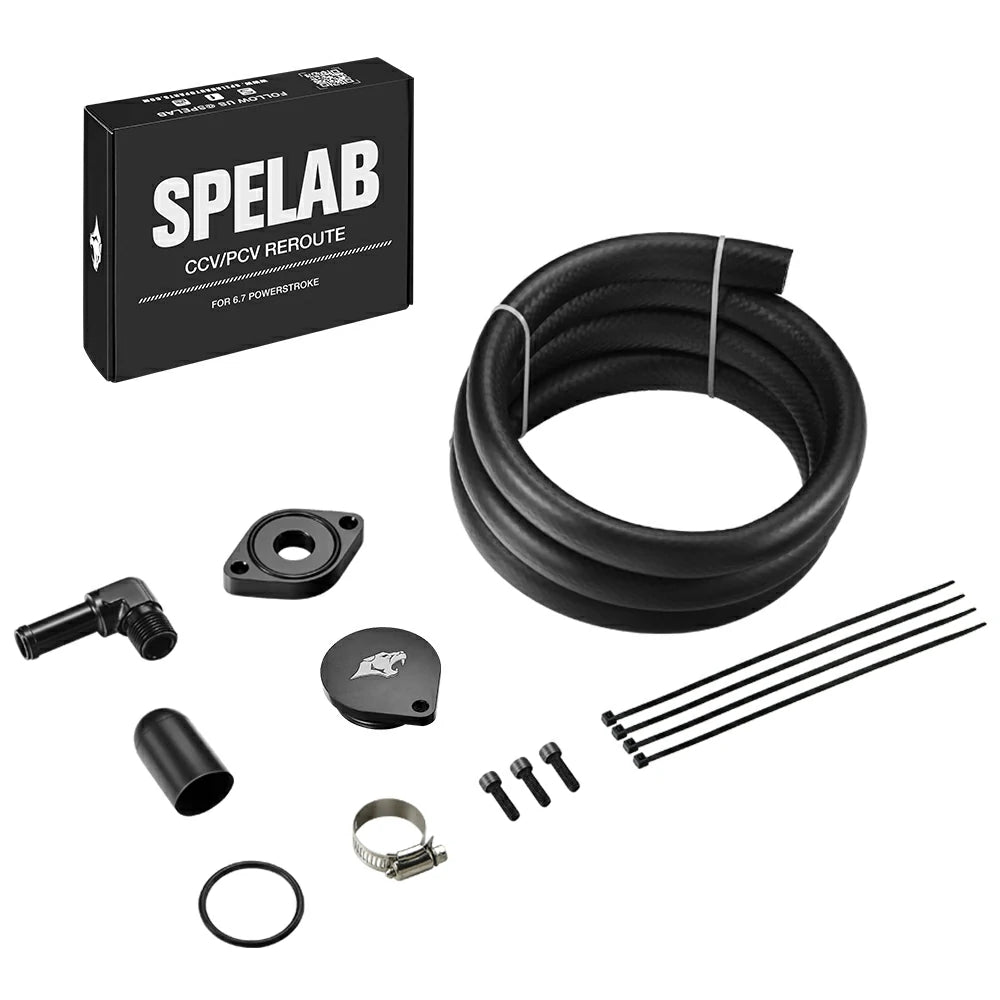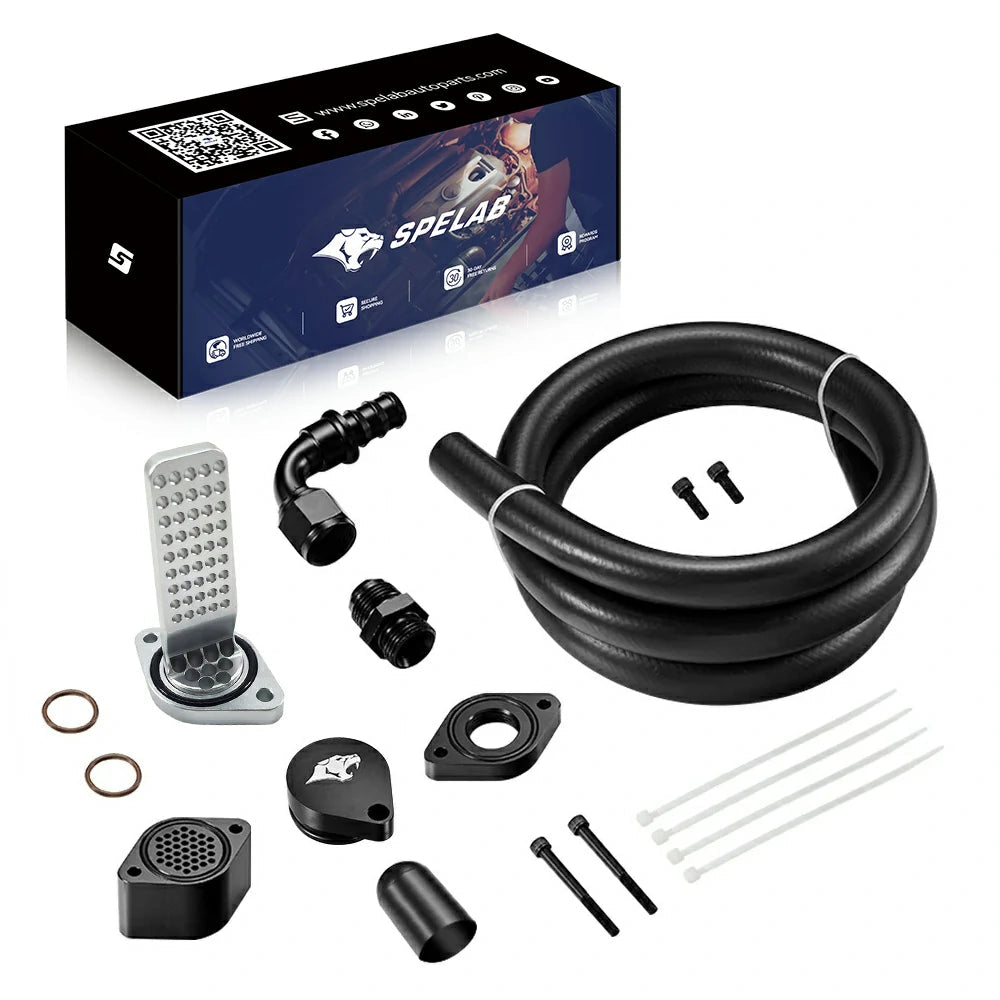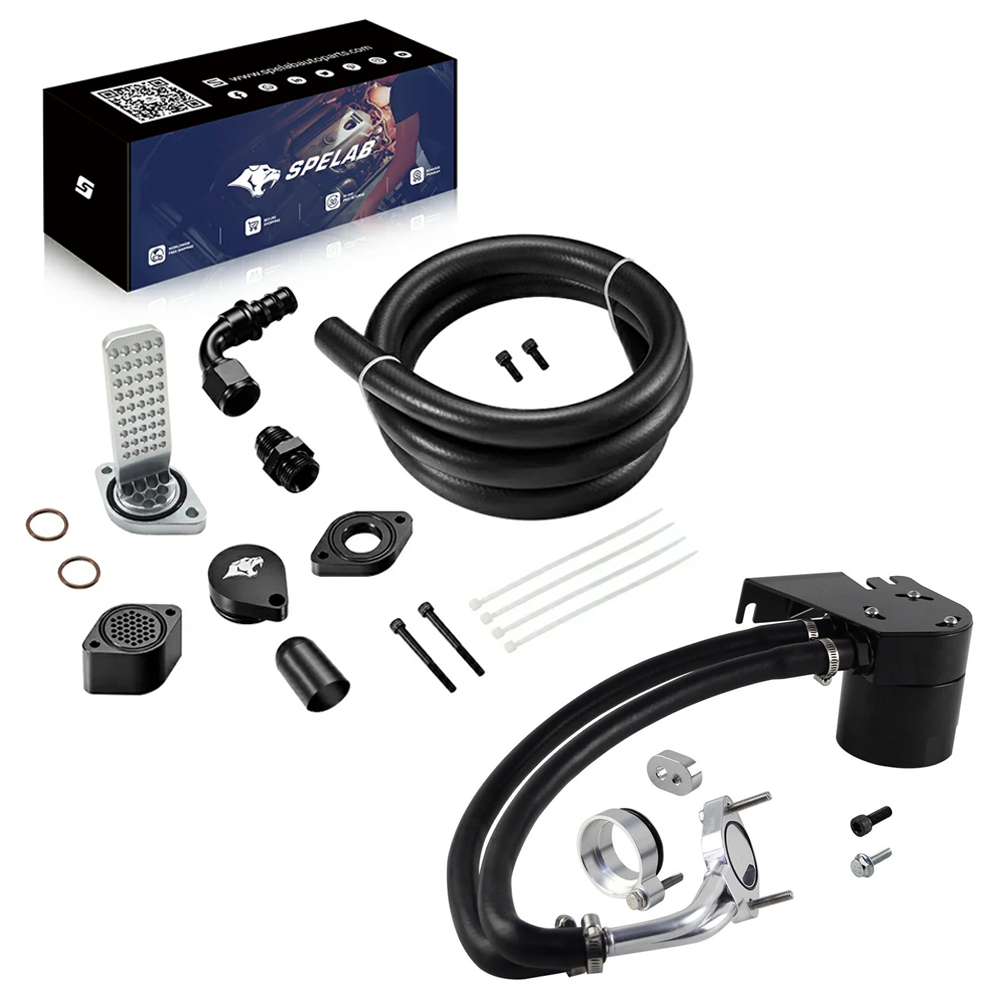Introduction
In the realm of modern automotive customization, enhancing engine performance is not just a pursuit but a technical challenge. The existence of Crankcase Ventilation (CCV) systems, while aiding in controlling engine oil emissions, can also pose as a bottleneck for performance optimization.
This article delves into the best CCV delete kit for the 6.7 Powerstroke engine, from the initial versions to the latest 3.0 iteration, systematically analyzing their pros, cons, and technological advancements to help you choose the most suitable upgrade.
Why CCV Delete Kits Emerged?
Performance Enhancement and Engine Response: Some automotive enthusiasts and professional racing teams seek to optimize engine response time and power output by removing CCV systems.
By reducing or completely eliminating components like ventilation pipes, separators, and CCV filters, engine intake contamination from oil mist can be minimized, thereby enhancing combustion efficiency and power output.
This is crucial for racing and high-performance vehicles aiming to maximize every combustion cycle's effectiveness.
Simplified Maintenance and Cost Efficiency: CCV systems typically require regular filter replacements and maintenance, which can become tedious and costly. To circumvent these maintenance expenses and complexities, deleting the CCV system can streamline vehicle operation and improve cost efficiency.
Principle of Initial CCV Delete Kits
Removing CCV system components, including ventilation pipes, valves, separators, etc., and sealing off the removed positions with the initial CCV delete kit ensures no exhaust gases re-enter the engine's intake system.
Exhaust gases are then directed straight into the atmosphere via exhaust pipes. While the initial CCV delete kit is straightforward, its advantages and disadvantages are evident.
6.7 Powerstroke CCV Delete Pros and Cons
Advantages:
- Straightforward Implementation: Relatively simple operation without the need for complex modification steps or special tools.
- Reduced Maintenance Costs: Eliminates the maintenance requirements of the original CCV system, avoiding concerns about carbon buildup, frequent filter replacements, or cleaning, thereby reducing maintenance costs.
- Enhanced Power Output: Eliminating potential restrictions on intake system airflow and air density from the CCV system can help improve engine response time and power output.
Disadvantages:
- Oil Leakage Issues: The design simplicity of the initial CCV delete kit lacks oil mist separation or capture functions. Large amounts of engine oil particles can lead to oil leakage issues, while even small amounts can cause pollution under the vehicle.
Why CCV Delete Kit 2.0 Emerged?
The emergence of the CCV delete kit 2.0 was to address the significant drawback of the initial version—oil leakage issues requiring oil mist separation or capture.
Design of CCV Delete Kit 2.0
Our goal was to address oil leakage issues at the source by focusing on oil mist separation, similar to an oil molecule filter that blocks 95% of oil particles. The built-in dual-layer oil molecule filter minimizes the passage of oil particles, thereby reducing the occurrence of oil mist emissions and associated leakage issues.
Compared to the initial version, version 2.0 adds a component capable of filtering 95% of oil particles. Designing a component is not difficult; the challenge lies in solving user problems from multiple perspectives, addressing issues while ensuring ease of installation.
After two months of research and testing, SPELAB researchers discovered a natural position that not only lies in the essential path of exhaust gas but also integrates seamlessly with the initial CCV. This led to the design of an internally embedded oil mist filtration component, nearly the size of a hole.
Why CCV Delete Kit 3.0 Is the Best 6.7 Powerstroke CCV Delete Kit?
The CCV delete kit 2.0 can filter 95% of oil particles, but some oil particles still overflow. To address this, we adopted simultaneous separation and capture methods to ensure zero oil leakage. Using the 2.0 kit initially filters 95% of oil particles, with the remaining 5% captured by the oil pan.
Choosing the Right CCV Delete Kit
Choosing a suitable CCV delete kit is crucial for both racing requirements and a better driving experience. SPELAB's innovative design and efficient solutions not only resolve oil leakage issues but also provide excellent performance enhancement and environmental benefits for your vehicle.
More Articles
- What Is CCV - All You Need To Know!
- Pros And Cons Of 6.7 Powerstroke Ccv Delete
- What Is CCV: What Is It And How Does It Work?
- How To Delete 6.7 Powerstroke CCV [Full Guide]
- Try Now: SPELAB's New 6.7 Powerstroke CCV Delete Kit - Be A Free Tester!
- What Does CCV Mean? And How To Effectively Delete, Reroute And Filter It On A 6.7 Powerstroke










